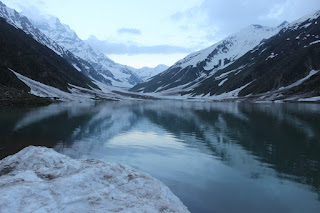"The Importance of Intersectionality in Anti-Bias Education."
Intersectionality is a term coined by legal scholar Kimberlé Crenshaw in 1989 to describe the interconnectedness of different forms of oppression that individuals can experience, such as racism, sexism, homophobia, and ableism. The concept of intersectionality is essential in understanding how different identities and experiences intersect and influence one another. In this article, we will discuss the importance of intersectionality in anti-bias education and how it can help promote social justice and equity in our schools and communities.
Initially, we need to understand the concept of intersectionality concept and the Anti-bias approach. Firstly, Intersectionality is a crucial concept that is essential in understanding and addressing different forms of oppression and inequalities that individuals may face based on their multiple identities and experiences. It is particularly relevant in the context of anti-bias education, where the goal is to create a more equitable and inclusive learning environment that recognizes and values the diversity of all students. Moreover, intersectionality encourages us to recognize the interconnectedness of different forms of oppression and how they can interact to create multiple forms of marginalization and discrimination. For instance, a student who identifies as both Black and LGBTQ+ may experience discrimination not just based on their race or sexuality, but also on the intersection of the two identities.
Whereas, Anti-bias education is an approach that aims to promote equity and social justice by challenging biases and prejudices based on race, ethnicity, gender, sexuality, ability, religion, and other aspects of identity. Anti-bias education is not about being colorblind or ignoring differences, but rather acknowledging and valuing diversity while actively working toward equity and inclusion.
In the context of education, anti-bias education means creating a learning environment that respects and values the diversity of all students. Teachers need to understand that students come from different backgrounds and experiences, and these differences shape their perspectives, beliefs, and attitudes. By embracing anti-bias education, teachers can create a more inclusive and equitable learning environment where all students feel seen, heard, and valued.
Anti-bias education goes beyond simply acknowledging the differences of the students. Teachers need to actively address and challenge biases and prejudices based on these differences. For instance, teachers can incorporate diverse perspectives and voices in their curriculum, and use inclusive language and materials. Teachers can also model inclusive behaviors and foster an environment where students can ask questions and share their experiences without fear of judgment or discrimination.
Moreover, anti-bias education is not just about addressing biases and prejudices on an individual level but also about addressing systemic and structural inequalities that exist in our society. Teachers can teach students about social justice issues, historical and current events that have shaped our society, and how they can become effective advocates for equity and inclusion.
When it comes to anti-bias education, it is crucial to consider intersectionality. Anti-bias education aims to promote social justice by challenging biases and prejudices based on race, ethnicity, gender, sexuality, ability, religion, and other aspects of identity. By embracing intersectionality, anti-bias education acknowledges that people have multiple identities and experiences that cannot be separated from one another.
In practice, intersectionality means creating a classroom environment that recognizes and values the diversity of all students. Teachers need to understand that students come from different backgrounds and experiences, and these differences shape their perspectives, beliefs, and attitudes. For example, a Black girl who uses a wheelchair may face unique challenges that a White boy does not. By recognizing the intersectionality of the student's identities, teachers can create a more inclusive learning environment.
Intersectionality also means teaching students about the interconnectedness of different forms of oppression. The concept of intersectionality acknowledges that people have multiple identities that cannot be separated from one another, and these identities can interact to create unique experiences of oppression and privilege. For example, a Black woman may experience discrimination not just based on her race or gender but also the intersection of the two identities. Students need to understand that racism, sexism, homophobia, and ableism are not separate issues but are interconnected and mutually reinforcing. For example, a Black transgender woman may experience discrimination based on both her race and gender identity. By acknowledging the intersectionality of their students' identities, educators can create a more inclusive and equitable learning environment that recognizes and values the diversity of all students. Teachers can also use intersectionality to teach students about the interconnectedness of different forms of oppression and how to become effective advocates for social justice.
Furthermore, intersectionality requires that anti-bias education goes beyond simply acknowledging the differences of the students. Teachers need to actively address and challenge biases and prejudices based on these differences. For instance, teachers can incorporate diverse perspectives and voices in their curriculum, and use inclusive language and materials. Teachers can also model inclusive behaviors and foster an environment where students can ask questions and share their experiences without fear of judgment or discrimination.
In conclusion, anti-bias education is a critical approach to promoting equity and social justice in education. By acknowledging and valuing diversity, actively addressing biases and prejudices, and teaching students about social justice issues, teachers can create a learning environment that respects and values all students and fosters a more equitable and inclusive society. Intersectionality is a critical aspect of anti-bias education. It recognizes the interconnectedness of different forms of oppression and how they can interact to create multiple forms of marginalization and discrimination. It encourages us to recognize the role of power and privilege in shaping social hierarchies and systems of oppression and to examine our own biases and prejudices. Moreover, it encourages us to address not just individual acts of discrimination or prejudice, but also the structural and systemic inequalities that exist in our society. By incorporating intersectionality in anti-bias education, we can create a more equitable and inclusive learning environment that values and respects the diversity of all individuals and communities. Teachers and educators need to recognize the interconnectedness of different forms of oppression and the diversity of their students. By embracing intersectionality, teachers can create a more inclusive and equitable learning environment and foster students who are advocates for social justice.
































